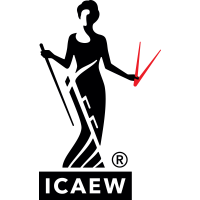Women’s football is skyrocketing in popularity. Learn how this unprecedented growth is being supported off the field by the work of accountants and finance professionals.
A record-breaking 50,000 football fans are expected to flock to Wembley Stadium on 14 May to watch the Women’s FA Cup Final between current cup holders Chelsea Women and Manchester United Women, playing in their first-ever cup final. The FA has issued the 50,000 tickets in the expectation that attendance will be greater than last year’s final, which hosted 49,094 spectators.
Women’s football is growing in popularity. Attendance at matches across the UK continues to break records. In England alone, the Women’s Super League (WSL) 2022/23 season has seen a 267% increase in crowds over the year before. The average crowd at a WSL match is now 6,961 – more than two and a half times the 2021/22 season’s average of 1,898.
Player transfer fees have increased, too. Globally, $3.3m was spent on women’s transfers in 2022, an increase of 19% and a new record. In 2020 and 2021, the combined total spend was $3.2m.
Roar of the Lionesses
The biggest driver of the growth in popularity of women’s football is arguably England’s triumph in the UEFA Women’s EURO 2022 championships. A total of 87,192 people witnessed the final at Wembley and there have been economic and social impacts as a result.
The host cities across England received an £81m boost in economic activity because of the tournament, according to UEFA and EY’s Post-Tournament Flash report. Domestic and international visitors made over 552,000 day and overnight trips to host cities and a total £44m was spent by spectators around match days and on trips across England.
Among the legacies of the tournament is that 85% of people who watched the Lionesses last year said they are likely to attend professional international and domestic women’s football events in the future – which is already being proven true by the latest statistics.
Almost three quarters of local residents in host cities felt the event brought their community closer. Over 416,000 opportunities were created in schools, clubs and the community to engage women and girls in grassroots football across host cities. The vast majority (84%) of those participating in these legacy activities said they improved their confidence and self-esteem.
Boom time
“It’s such an exciting time,” says Charlotte, a senior finance business partner at the Football Association. “The success of the Lionesses at the UEFA Women’s EURO has built on the years of relentless hard work of many within football.” She says it’s difficult to put a number on the projected growth in revenue because there is no ceiling at this stage.
“In the professional women’s game – both internationally with our Lionesses and domestically with the Barclays Women’s Super League and Barclays Women’s Championship – there is so much continued revenue growth potential,” she adds.
“We are on track to break the attendance record for the Vitality Women’s FA Cup and have already broken the attendance record for the FA Women’s Continental Tyres League Cup Final. We are also in year one of our three-year Women’s National League Strategy. Every aspect is growing.”
The strategy, titled ‘Empowering for Success’, is backed by £1m investment per season for the next three years from the Premier League. It focuses on eight priority areas, including defining the FA’s Women’s National League’s commercial value and engaging with partners to grow revenues and inward investment.
Off the field
Accountancy in the football industry covers a range of areas, including financial reporting in relation to player transfers, stadium leases and recognising revenue from different sources. Given the global nature of the football business – including foreign-owned clubs, multinational sponsors and international broadcasters – there is added complexity for finance professionals in the sector.
Charlotte’s role at the FA has a wide remit – covering all aspects of the grassroots and women’s professional game – and accountancy skills have provided a solid foundation.
“Accountancy skills are more than numbers, but the numbers facilitate the interactions, and that is key,” she says. “The anchor skill is technical accounting and numeracy skills to support the delivery of clear and accurate information for decision making; this knowledge and information needs to be trusted in order for me to build relationships and support the delivery of the FA strategy.”
“I have many stakeholders, so communication is key. I present at multiple high-profile boards, so I need to know every detail, but also present at a high strategic level. Problem solving and analytical skills are required regularly and you need to balance challenges with finding a solution.”
Charlotte’s role covers domestic and international football, cup competitions and participation programmes. “In the women’s game, there are a lot of ‘first times’, so you need to draw on those skills when there isn’t a precedent to follow,” she says. “At matches, I will sometimes have a little smile to myself when I notice something that I played a small part in facilitating and think, ‘if only people knew what went into making that happen.’”
Finance partners at the FA undertake a range of roles to support the organisation and the sport, from producing robust financial forecasts and annual budgets that support corporate strategy to preparing ad-hoc financial reporting and analysis in responses to requests across the business. Developing and maintaining strong working relationships with budget holders is crucial, particularly given the many moving parts in football finance – anything from a high-profile transfer or new stadium, to broadcasting rights and promotion.
“Being abreast of as much as I can helps me deliver in my job. The numbers need to mean something, and you need to be comfortable that you have learnt as much as you can to stand-by any decision,” she adds. “Football means so much to many people, it does copious amounts of good and I am privileged to be at the heartbeat of that, playing my small part to deliver the now and shape the future.”
